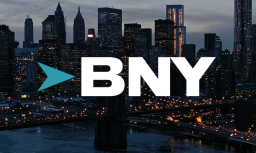As neobanks, FinTechs and banks jockey for market share, they must focus attention on the check — that signed paper payment instrument that is making inroads into the digital age.
As Ingo Money CEO Drew Edwards told PYMNTS’ Karen Webster in an interview, checks can be a critical component of money mobility, or a hindrance. At a high level, money mobility is the concept and execution whereby money — from any source and across any payment method — can move in and out of accounts, including “me to me” transactions between linked accounts.
There’s just one problem.
“Checks are a fraud magnet,” Edwards said.
Check fraud is doubling every few years as people have moved from bricks to clicks. In one telling example of the digital shift, Bank of America CEO Brian Moynihan said in recent weeks that fewer than 15% of deposits physically enter branches anymore. The American Bankers Association has estimated that check fraud tops $15 billion annually.
While cash still has its place, according to Edwards, its use is quickly declining from current levels (the Federal Reserve has estimated it at 20% of payments volume). All the while, checks, as a digital, inbound funding source, is still growing.
Advertisement: Scroll to Continue
Related: Data, New Solutions Ease Switch From Paper Checks to Digital Payments
A check is a financial instrument — literally a promise to pay — that protects the person writing the check, often at the expense of the person receiving the deposit, Edwards said. If the check is stolen, the deposit is reversed and becomes the liability of the depositor; the issuer has given the depositor money that was not in fact “good funds” and now has to get that money back.
That’s a significant problem for the digitally focused FinTech issuers who must mull checks from an almost existential standpoint. First, they must understand the difference between check deposit and check cashing. In the former case, the depositor takes the risk, while in the latter, the check is converted into instant, irrevocable funds. What will they offer — depository services, instant check cashing, perhaps both?
We’re seeing at least some blurring of the lines between check deposit and check cashing within the industry. Edwards noted that consumers can cash checks inside of PayPal, Venmo and most of the major prepaid brands; many neobanks elect to just take deposits, and some of the marquee names among the traditional financial institutions (FIs) offer their consumers both options.
Checks, in other words, are evolving through the “crawl, walk, run” stages, transitioning from paper to ready funds, rendered across digital channels.
Understanding the Risk
No matter the issuer, Edwards said, checks need to work for a financial services firm’s whole customer base, and it’s all got to be done safely. He said many of the decision makers in the FinTechs, and even in some large banks, don’t understand the lag times and the liabilities tied to the checks.
The FinTechs and the banks, he said, have the technology to get a picture of a check, to submit an X9 file, and then it goes into an account. That’s a fairly easy thing to do, but behind the mechanics of the digital deposit lie deeper questions around risk.
Most FinTechs manage deposit risk by restricting availability of the service or the funds to a smaller percentage of their customer base, forcing the others to seek access to these funds elsewhere. However, firms need to realize that some people deposit checks; some people cash them, Edwards said.
“Those are two different value propositions, both of which are important to different sets of the population,” he said. “To fully serve the marketplace, you need to enable both activities and let your customers choose.”
Many consumers who take a picture of their check think that simple act gives them access to “good” funds. That’s especially true if the bank makes someone wait several days before having access to those funds, Edwards said.
They think the bank is clearing the check, but what’s really happening is that the FI has made a risk decision, said Edwards, in order to put a little time into the mix.
See also: Why Paper Checks Persist in Property Management
However, waiting even 10 days to make funds available doesn’t stop the risk on check deposits. In Ingo Money’s experience, about 12% of check returns occur after 10 days. For the issuers that take deposits — and make the service available to many people without proper risk management — they will experience high levels of losses on checks.
Winnow that down a bit, then, and to cut down on risk, an issuer may decide to only make check services available to direct deposit customers who have been through at least two pay cycles with the institution.
That demographic tends to be less than 30-40% of the account base, said Edwards, which defeats one aspirational goal of money mobility: to be universal.
As with any risk management, this comes down to expertise in data, Edwards said. Unfortunately, when it relates to checks, the normal sources of data are bank-centric and are missing the broader “check cashing” marketplace.
That limits visibility into bad actors and schemes unless you have a partner that can see the entire marketplace.
“Fraud is just going to escalate from here,” Edwards, said noting that risk increases as transactions move inexorably online, “until the check runs through its life cycle where it will go away someday.”
The ‘Newbie’ Issue
Additional risk lies with the fact that so many firms are relative newbies in taking checks and inherently become “fair game” for fraudsters.
These newbies don’t have the scale or customer base that a Wells Fargo might have when it comes to parsing risk and fraud. The banks also have a leg up because they typically make it more difficult to open an account, thereby making it more difficult to defraud them.
“Every one of these FinTechs that have started taking checks has helped to create a new ecosystem where the bad actors can play,” Edwards said.
Those digital-only firms are good at leveraging machine learning (ML) and artificial intelligence (AI) to examine risk with digital transactions, but they come up short when it comes to examining paper-based activity that is in turn brought into the digital realm, he said.
FinTechs may be signing up to embrace image capture and deposit technology, but they don’t have the market data, visibility or experience necessary to manage the check risk with broad availability. It takes a nationwide view of the bad actors to fight fraud effectively.
Bad actors tend to reuse locations, devices, identities and other components in the chain, and their activity must be tracked and locked down everywhere it can be seen.
Read more: What FinTechs Need to Know About Money Mobility
The Goal
Done well, FinTechs can successfully manage inbound funds from checks in a way that they are made available with a choice for instant funds availability to the consumer (thus, the check is not deposited, it is transformed instantly into cash).
Platforms such as offered by Ingo, he said, give consumers the opportunity to make a deposit — and have the provisional funds available now or in the future — or pay a fee to have instant irreversible access, while transferring the risk to the platform.
Then the check, as a transaction, becomes safer, because the consumer can choose to take risk themselves for free, or pay a fee and cover the costs necessary to ensure there is good availability of funds, he said.
Thus, we reach an ideal state of money mobility and implementation, Edwards said. Everyone can be offered options for funding their accounts from checks, including the choice to cash checks or deposit them.
The digital players need to move past their inclination to offer fee-free services as a “hook” for consumers and realize that individuals are indeed willing to pay for speed, safety and convenience when they are offered a choice. In the end, choice is the critical, competitive advantage.
“You still need to care about the check,” Edwards said, “because that is among the basic building blocks of inbound account funding of a banking relationship.”



